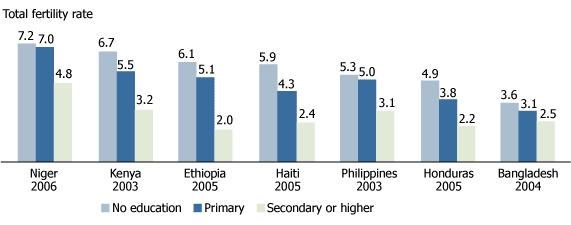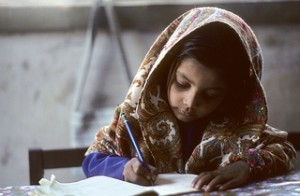Supporting the ‘Malala’s’ of the World
Oct 18th, 2012 | By admin | Category: Social JusticeBy Suzanne York, howmany.org
Moral outrage has been expressed around the world over the shooting of Malala Yousufzai, a Pakistani teenage advocate for girls education. The fourteen-year-old was shot in the head when Taliban fighters boarded her school bus, severely injuring her and another student.
Secretary of State Hillary Clinton said that the “…attack reminds us of the challenges that girls face, whether its poverty or marginalization, or even violence just for speaking out for their basic rights”.
Sadly, the attack came just two days before the first ever International Day of the Girl, meant to not only raise awareness on empowering girls but also “to help galvanize worldwide enthusiasm for goals to better girls’ lives, providing an opportunity for them to show leadership and reach their full potential.”
Nicholas Kristof and others have written of the threat to girls in many countries. And Greg Mortenson’s Central Asia Institute reported that in Pakistan last year, militants destroyed 440 schools, including 130 all-girls’ schools. In neighboring Afghanistan, several dozen teachers were murdered just this past summer for teaching at girls’ schools.
There are many Malala’s around the world, who in Secretary Clinton’s words, “struggle against tradition and culture to pursue a life of meaning and purpose in their families and communities.” Education is the key to change, and to improving lives. For some, that is a threat to the status quo. Because when girls (and boys) attend school, lives improve; these same lives should not be under threat for the basic right of education.
The benefits of educating girls are enormous, and extend beyond one individual, affecting families and entire communities. Robert Engelman, president of the Worldwatch Institute, wrote that in every culture surveyed to date, women who have completed at least some secondary school have fewer children on average, and have children later in their lives, than do women who have less education.
Engelman also noted what many studies have shown – that more educated women want fewer children and tend to provide them with better life chances in terms of better health and education.

Source: Population Reference Bureau, http://www.prb.org/Educators/TeachersGuides/HumanPopulation/Women.aspx
Other benefits of girls’ education include:
- an educated girl will invest 90% of her future income in her family, compared to 35% for a boy;
- lower poverty rates;
- improved economic opportunities;
- improved health of children, including lower infant and child mortality rates;
- the child of an educated mother is more likely to attend school;
- delayed marriage and childbearing.
Fortunately there are many politicians and others in high level positions who get this. One of the best is Mary Robinson, former president of Ireland and former U.N. high commissioner for human rights. She has said keeping girls in school was one of the most important things policymakers could do to address the coming challenges of an ever-increasing population.
Very little of global aid money goes into education, arguably the most powerful force for positive social change, economic prosperity and global stability. Today, three billion dollars of global aid is spent on education, according to Gordon Brown, former UK prime minister and now United Nations Special Envoy for Global Education. Compare that to the nearly $7 billion spent by Americans to celebrate Halloween in 2011.
The United States has invested, via foreign and military aid, a huge amount of money into Pakistan. A better return on investment though would be in supporting people like Malala Yousufzai, who want more for themselves and their country. The U.S. and international community should step up efforts to help foster more Malala’s around the world.
Suzanne York is a senior writer with the Institute for Population Studies
photo source: http://www.flickr.com/photos/un_photo/6715184089/sizes/n/in/photostream/

